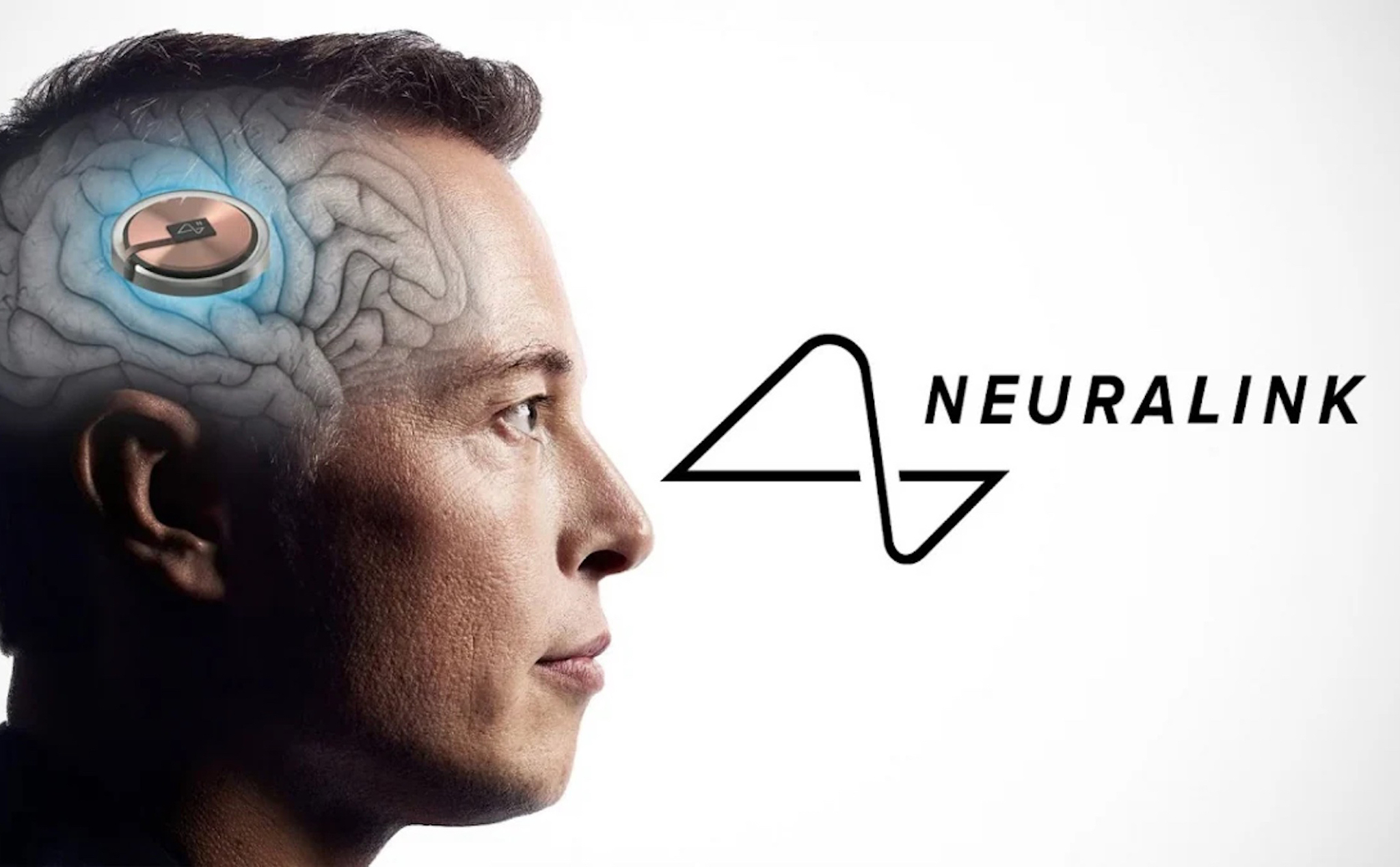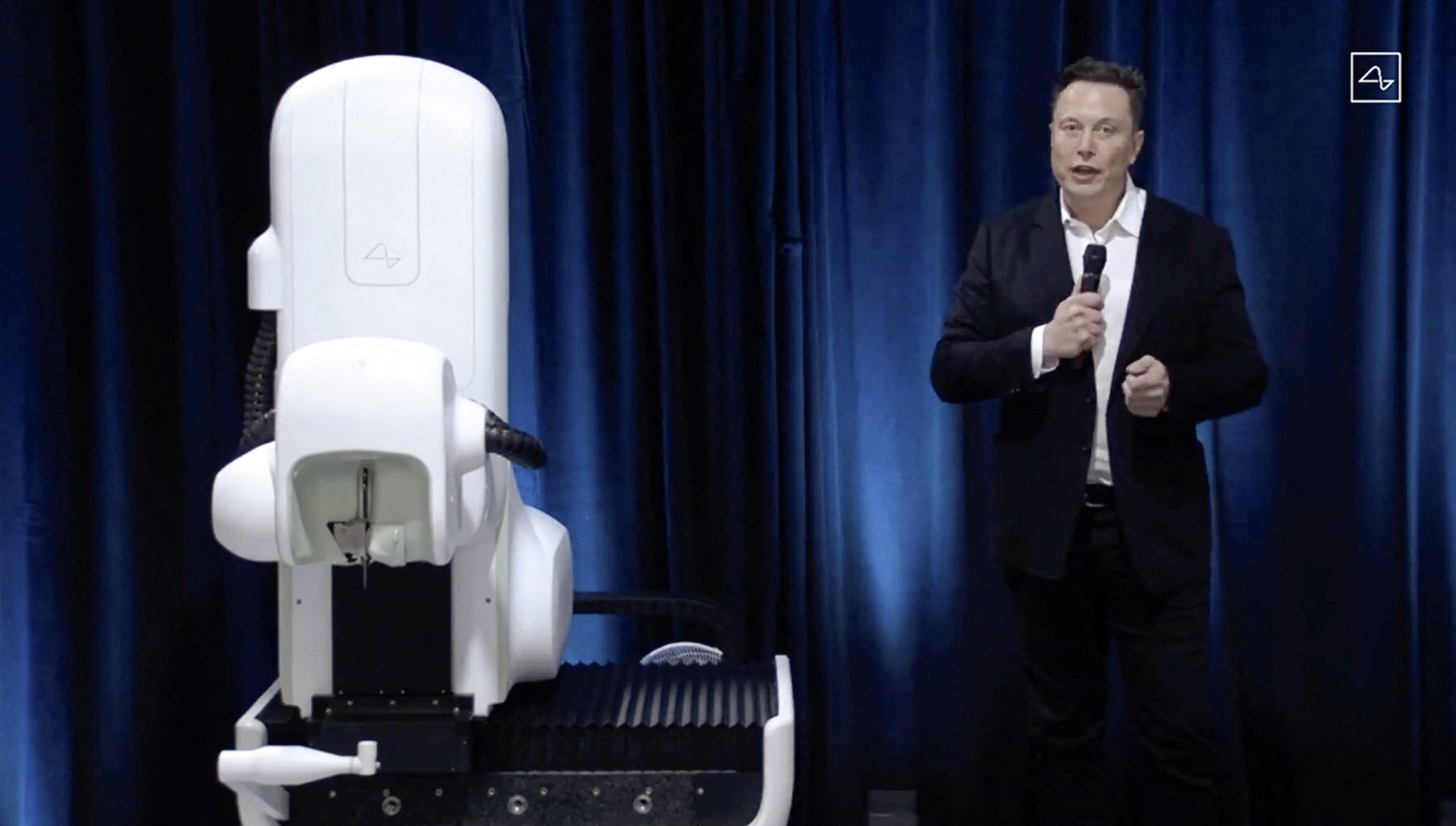
Elon Musk has long been a pioneer in fields ranging from electric cars to space exploration, but his latest venture may be his most ambitious yet.
Neuralink, the neurotechnology company Musk co-founded, is now planning to test its revolutionary artificial vision chip, Blindsight, on humans for the first time by the end of 2025.
This groundbreaking technology aims to help people who are blind regain some form of sight through an innovative neural interface. At a recent event in Wisconsin, Musk shared his hopes for this incredible leap in medical technology and the potential it holds for transforming the lives of millions of blind individuals worldwide.
Neuralink’s Blindsight is a cutting-edge neural implant designed to simulate vision for individuals who are blind. The technology works by implanting a microelectrode array into the visual cortex of the brain, the region responsible for processing visual information.

The system relies on external cameras that feed real-time images to the brain, bypassing damaged or non-functioning parts of the eye and optic nerve. Instead of relying on traditional methods such as prosthetics or eye transplants, Blindsight offers a direct brain interface that could open up new possibilities for sight restoration.
According to Musk, the initial version of Blindsight will not provide high-definition vision. Instead, it will offer a form of low-resolution sight, akin to the basic graphics of an Atari video game.
While the first iterations may be limited in clarity, Musk is confident that the technology will improve dramatically over time. In the future, Blindsight could evolve to provide "superhuman" vision—enabling users to perceive the world in entirely new ways, including enhanced vision beyond the capabilities of natural sight.
During his speech at the Wisconsin event, Musk described the Blindsight project as a step toward the future of human-machine interfaces. He explained that the technology could offer transformative benefits for people who have lost their sight due to conditions such as macular degeneration, glaucoma, or other optic nerve-related disorders.

Musk emphasized that the potential of Blindsight goes beyond just helping the blind see; it could eventually allow for enhanced vision, like seeing infrared or ultraviolet light, abilities that humans cannot naturally perceive.
The Blindsight chip functions by stimulating neurons in the visual cortex in response to real-time visual data captured by external cameras. This process bypasses the eyes, offering a new route for processing visual information.
Musk’s vision for the future of Blindsight is one where the technology becomes so advanced that it could eventually surpass the visual capabilities of ordinary human sight, offering those who use it abilities that are currently impossible.
A crucial milestone for Blindsight came in September of the previous year, when the U.S. Food and Drug Administration (FDA) granted the technology "breakthrough" status.

This designation is given to medical devices that show significant promise in addressing serious medical conditions. Blindsight was awarded this status due to its potential to radically change the lives of individuals suffering from blindness, a condition that affects millions globally.
The breakthrough designation means that Neuralink will receive expedited support in terms of clinical trials, regulatory review, and overall development of the device. This designation is crucial as it paves the way for Neuralink to proceed with human testing of Blindsight within the next few years.
Musk's ambitious timeline of having the device ready for human implantation by the end of 2025 reflects both the urgency of the project and the promise it holds.
Musk acknowledged that while Blindsight is still in its early stages, the technology’s potential to aid those suffering from blindness could be life-changing. He expressed hope that the initial trials will yield positive results, enabling Neuralink to refine the technology and move closer to making it available to the general public.

As mentioned, the first version of Blindsight will offer users low-resolution vision, similar to the graphical output seen in early video game consoles like Atari.
While this may sound underwhelming compared to the sharp vision we are accustomed to, Musk explained that it’s a necessary step in the development of the technology.
By focusing on lower-resolution sight at first, Neuralink can refine the technology and ensure that the fundamental neural interface works as intended.
Musk believes that this phase of development is critical for understanding how the brain responds to artificial visual input. Once the system is fully functional at this basic level, Neuralink will begin working on improving the visual resolution, eventually aiming for “superhuman” sight.
For now, the initial goal is to provide a sense of orientation and recognition, which could dramatically improve the quality of life for blind individuals by allowing them to navigate the world with greater ease.

What makes Blindsight different from other technologies aimed at restoring sight is its approach to bypassing the eye and optic nerve entirely. Traditional methods for vision restoration, such as retinal implants or optical nerve stimulation, attempt to fix damaged components of the eye or nerve.
However, these methods face limitations when it comes to the complexity of the brain's visual processing.
Blindsight, on the other hand, directly interfaces with the brain’s visual cortex, which allows it to bypass the need for functional eyes or optic nerves altogether.
This breakthrough could potentially open up new avenues for treating blindness that were previously thought to be insurmountable. It also holds the promise of being adaptable for a wide range of visual impairments.

This revolutionary approach could offer a significant improvement over current prosthetic technologies. For individuals whose blindness stems from issues within the brain’s visual cortex, Blindsight might provide the only viable solution.
Moreover, the ability to provide "superhuman" vision, like seeing infrared or ultraviolet light, could enhance the potential of this technology far beyond simply restoring normal vision.
The journey ahead for Blindsight is still full of challenges, but Musk’s optimism and commitment to the project are evident. The technology must undergo extensive clinical trials to ensure its safety and efficacy before it can be widely available.
However, with the FDA's breakthrough designation and the progress Neuralink has made so far, the prospects for this transformative technology appear promising.
Musk has made it clear that the initial testing phase, expected to begin at the end of 2025, will be pivotal for determining the future trajectory of Blindsight. If the technology can successfully help blind individuals regain a functional form of vision, it could spark a revolution in the field of neurotechnology and medical devices.

Furthermore, the potential for superhuman vision could redefine the very limits of human perception, opening up entirely new possibilities for the future of human augmentation.
Elon Musk’s Blindsight project represents a bold step toward a future where artificial intelligence, neuroscience, and human capabilities converge in ways that were once the stuff of science fiction.
While the initial version of the technology may offer only low-resolution vision, the long-term potential is vast. By creating a direct interface between the brain and external devices, Neuralink may soon offer a solution to blindness that is unlike anything available today.
As Musk and Neuralink prepare to begin human trials by the end of 2025, the world will be watching closely. The implications of Blindsight are profound, not only for the blind community but also for the future of medical technology and human augmentation.
If successful, this technology could reshape how we think about vision, perception, and the capabilities of the human brain itself.


-1747906195-q80.webp)
-1747729212-q80.webp)
-1747034489-q80.webp)